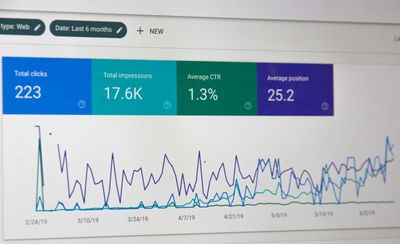Today’s customers are inundated with choices. With the rise in online shopping, the breakdown of traditional customer journeys, and increasing scrutiny over household budgets, customers aren’t just looking at what you offer.
They’re comparing, contrasting and deciding based on how you stack up – in categories you may not have developed and against competitors you might not expect.
As a small business owner, learning how to identify business competitors is essential for growth. By mapping the competitive landscape, you gain valuable insights that you can use to find a unique voice, engage customers with relevant content and products, and sharpen your competitive edge.
What’s changed with Australian customers?
Australian customers have flocked to digital retail channels since early 2020. Although COVID-19 necessitated the shift to online shopping, the behaviour seems to be sticking for most people.
Expectations have also evolved. Australian consumers have shown they won’t tolerate bad experiences, either in-store or online.
Additionally, people are still spending less due to the economic hangover of the pandemic and the ongoing cost of living crisis.
What does that mean for local businesses?
All these changes mean Australian businesses need to reassess their competitors. Traditional competitors have changed. New ones have emerged – especially online.
Increasing competition for decreasing dollars means local businesses need to be crystal clear on who they are, who they’re competing against, and why they deserve a customer’s business.
Identifying business competitors: Direct vs indirect competitors
Digging into direct competitors
Direct competitors are those businesses that offer a product or service similar to yours.
But how do you spot them? One straightforward way is to search online for local businesses in your area. For example, someone who owns a café in the CBD might scope out other high-rated cafés.
You can also get creative with a simple ASIC business name search. This not only reveals who’s operating in your space but also highlights business name availability, which is crucial for your branding strategy.
Additionally, put yourself in your target audience’s shoes and see which brands meet your needs. Online marketplaces and social media platforms can be a great way to discover brands like yours.
Analysing indirect competitors
Indirect competitors might not sell the same product, but they vie for your customer’s attention (and wallet).
Indirect competitors range from relatively obvious to surprisingly abstract. For example, our CBD café competes with the corner deli and juice bars. They offer different products but generally compete when someone has $5 and a craving for a pick-me-up.
However, supermarkets, food delivery apps, office coffee machines and vending machines all divert a customer’s attention away from the café. Although these aren’t typical competitors, they compete in the realm of quick bites, short breaks and lunch budgets.
Another example is a local plumber specialising in small jobs. While they might recognise other plumbers as direct competitors, YouTube is arguably just as big a threat. Every DIY plumbing video is another potential missed opportunity.
Understanding indirect competitors involves broader market research. Look at industry reports, social media trends and even customer reviews to figure out where your target audience might go when they’re not coming to see you.
SWOT analysis
Once you have a list of your competitors, you need to know more about them.
A SWOT analysis (Strengths, Weaknesses, Opportunities, Threats) is your tactical tool here. Examine your competitors’ products and services, pricing strategies, marketing efforts and unique selling points (USPs).
How do they position their business name and brands? What’s unique about the customer experience?
You might have conducted a SWOT analysis previously for your own business. Now flip the script and adopt your competitor’s persona to unlock insights they missed.
Develop a competitive strategy
Identify your competitive advantages and how you will use them to differentiate your business.
Your competitive strategy should capitalise on what you do best. Is it exceptional customer service, innovative product design, or perhaps a unique business name that resonates with local customers?
These differentiators, also known as USPs, are the key to cutting through the competitive noise. Pinpoint them and integrate them into your business plan, marketing and product offering:
- Integrate USPs into your business name, logo, website and brand collateral
- Develop core principles that guide decision-making and inform customer communication
- Conduct a business name availability search to ensure your name is unique and recognisable
- Consider how marketing strategies communicate and reinforce your USPs
- Gather customer feedback to understand whether the message is getting through
Wherever possible, set SMART goals to ensure the strategies you’re rolling out are reeling in customers.
Remember, identifying business competitors is a dynamic process. Regularly revisit your competitor analysis to keep your business agile and ahead.
Build a business plan, strengthen your business name
In a market where small business failure rates are at an all-time high, a robust competitive analysis could be the difference between fading into the background and emerging as a market leader.
We’ll help you stand out for the right reasons
At Registry Australia, we're more than a business name registration portal. We're your partner in carving out a unique space in the competitive landscape.
From ASIC company registrations to securing the perfect .au domain name, we provide the tools and support to ensure your business not only competes but excels.



